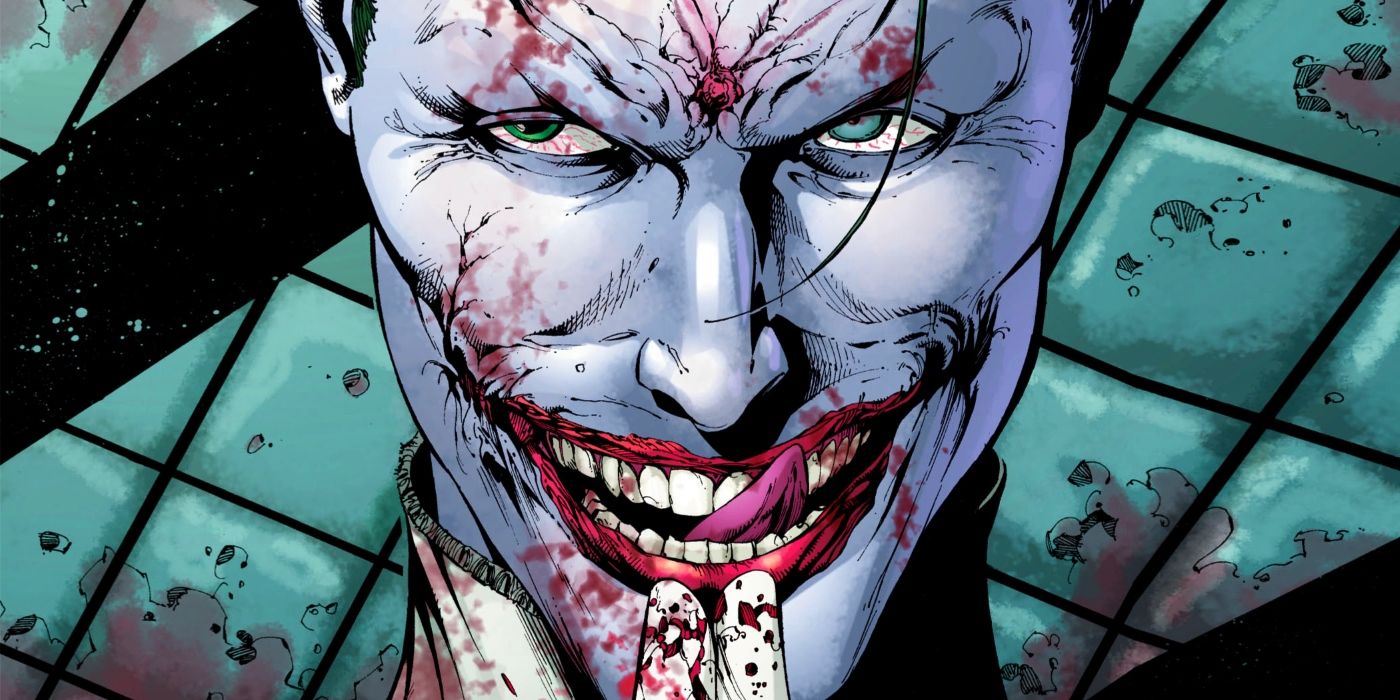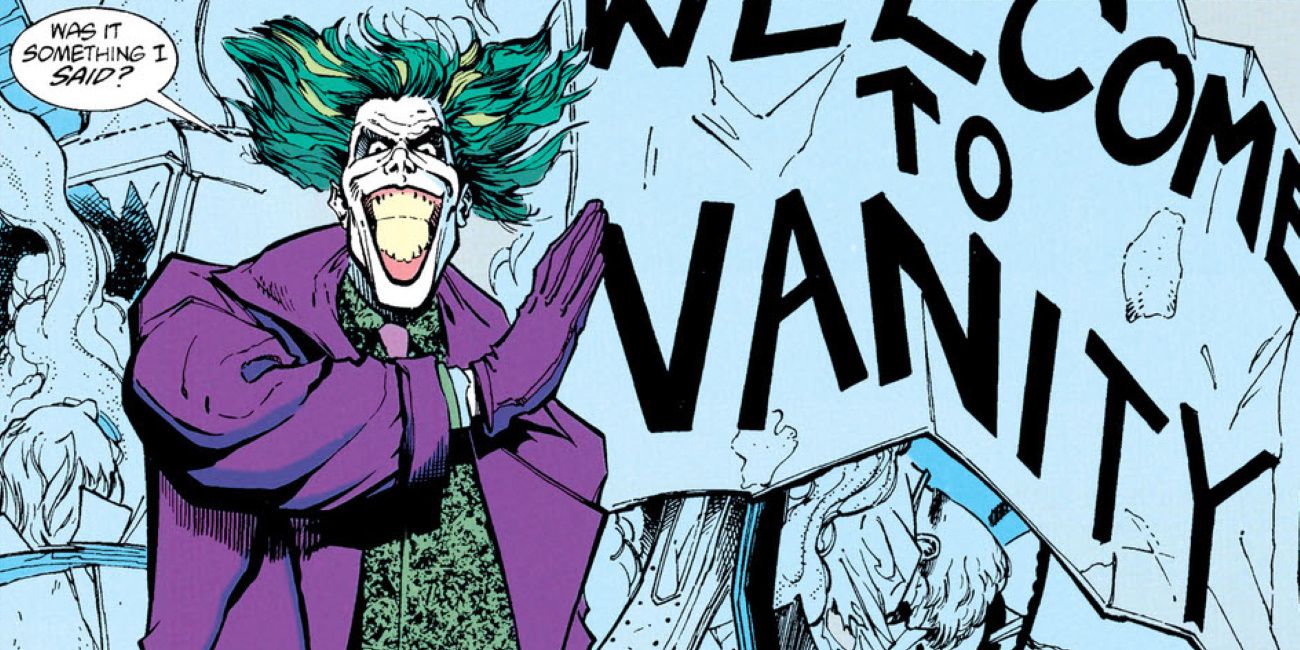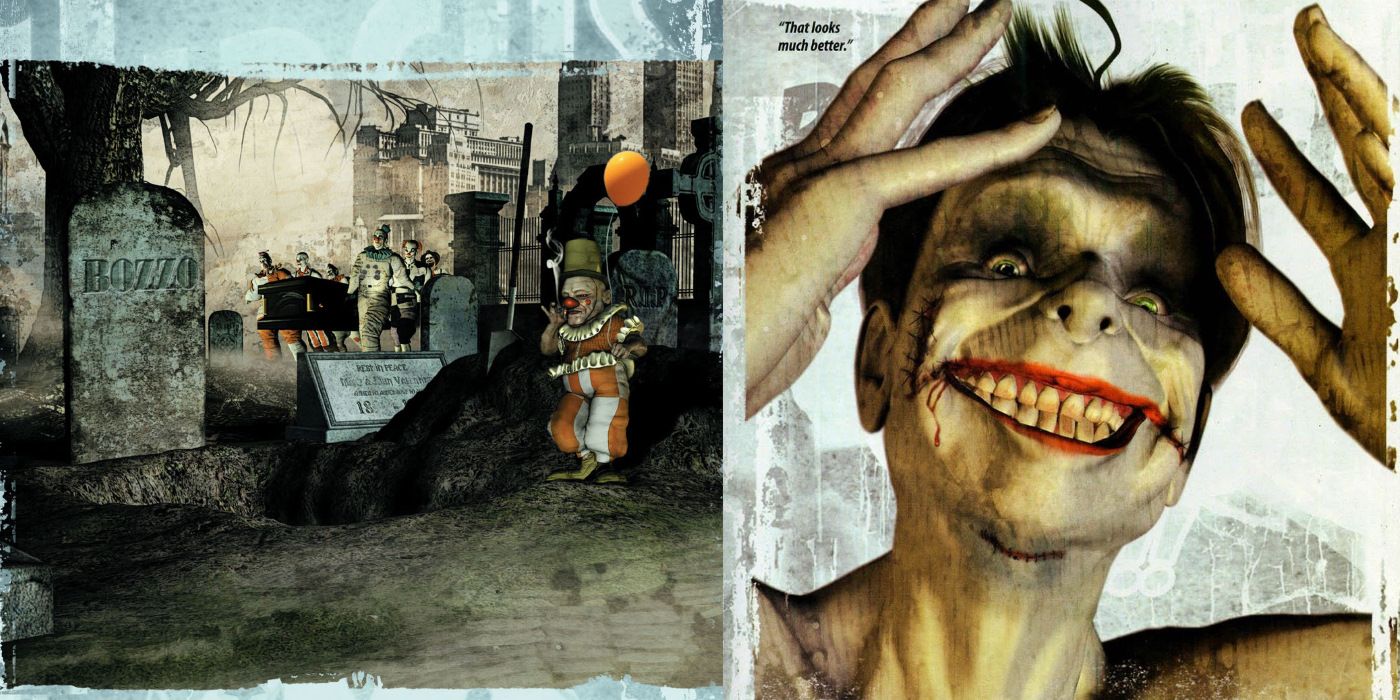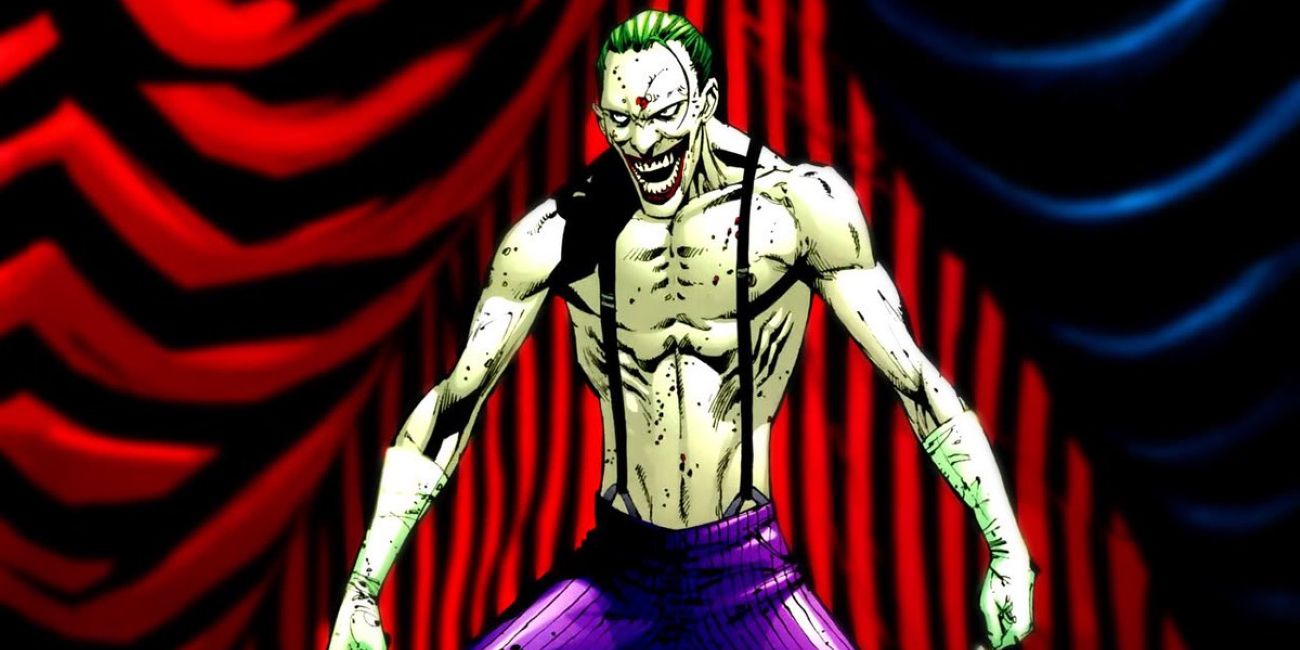With the Joker film breaking box office records, DC's greatest villain is more popular than ever -- but nothing Joaquin Phoenix or Todd Phillips did with the character is as radical as the ways Grant Morrison first re-imagined him in the pages of DC Comics.
The Scottish author had already come up with wildly imaginative takes on classic comics like Animal Man and Doom Patrol when he got his first opportunity to write the Joker in 1989. With art by Dave McKean, Arkham Asylum: A Serious House on Serious Earth sent the Dark Knight into a nightmarish mental hospital overtaken by his maddest villains decades before the blockbuster Arkham games. And of course, you can't have a set-up like that without the Clown Prince pulling the strings.
But the graphic novel raises an intriguing question: should the Joker be there at all? His therapist suggests he may not be insane at all, at least not in any conventional way. "It's quite possible we may actually be looking at some kind of super-sanity here. A brilliant new modification of human perception, more suited to urban life at the end of the twentieth century...Unlike you and I, the Joker seems to have no control over the sensory information he’s receiving from the outside world. He can only cope with that chaotic barrage of input by going with the flow."
The therapist goes even further, with a theory that explains how his portrayal as a harmless prankster in his early appearances could coexist with his more modern characterization: "That’s why some days he’s a mischievous clown, others a psychopathic killer. He has no real personality. He creates himself each day."
The Cosmic Joker
Any character written by so many authors will have some inconsistencies, but Morrison provides an explanation that's consistent with what we know about the Joker, and it's one that opens up new possibilities for Morrison to reinvent him over and over again. When he appears in Aztek, co-written by Mark Millar with art by N. Steven Harris, the Man Who Laughs has declared himself the Cosmic Joker. His crimes aren't just fun and games: they're a nihilistic statement about the cosmic joke of a universe without meaning. There's no motive and no logic: he makes his plans by cutting random words out of books (the same method used by the surrealist artists who inspired Doom Patrol). It's the Joker as Agent of Chaos years before Heath Ledger's version of Joker ever put on the purple suit. Or is he? When Batman and Aztek open up the book the Joker cut up to create his crimes, a few more fragments spill out, spelling the message, "He who laughs last, laughs longest."
Even though he'd put on a new persona by then, the Joker reveals an even more shocking implication of his chaotic mind when Morrison takes over the main Batman series. For years, writers created Batman stories as little puzzles, and the Dark Knight spent almost as much time investigating Joker's clues to where he'd strike next as he did with the Riddler. But the Joker turns all that on its head: "the real joke is your stubborn, bone-deep belief that somewhere, somehow, all of this makes sense!...you think it all breaks down into symbolism and structure and hints and clues...no, batman, that's just wikipedia." The implication is that Joker never left any clues at all, that the chaotic workings of his mind are impossible to understand. And the even more shocking implication is that, by finding the Joker's clues and solving them, that Batman was trying to impose order on that chaos -- and somehow, actually succeeding!
The Clown at Midnight
In a special issue of Batman written as an illustrated novel instead of a conventional comic book, Morrison further develops the idea of the Joker's shifting personality as he commemorates the "birth" of a new identity: the Clown at Midnight. After a policeman dressed as Batman shoots him in the face, the Joker recuperates in Arkham, rebuilding his mind as he rebuilds his body. The story references past incarnations of the Joker as if they were periods in a painter's career: "the Satire Years," "Camp," and "New Homicidal." The Joker physically goes into labor as he delivers his new self, "He squeals, and kicks out one leg and then the other, acting out a disturbing can-can of contraction, labor, and birth as the Asylum bells ring out wildly... Multiple Joker voices vie for control as he prepares to give blasphemous birth to himself like the Word of God in reverse." The new Joker has adapted to the apocalyptic paranoia of the new century, an almost supernatural figure whose blood kills the poor mosquito who tries to drink it, who even Harley Quinn no longer recognizes. "He has gone beyond her understanding into a religious agony of perfection."
Clotheshorse Clown
The Joker's shifting personality gave Morrison and his collaborators plentiful opportunities to design new looks for their villain. Predating Jared Leto's frequently shirtless turn in Suicide Squad, Tony S. Daniel's art for R.I.P. portrays the Joker in a disturbingly sexual light. He wears a form-fitting sleeveless doctor's smock to help the conspirators in the Black Glove plot their death trap for Batman, before attacking him while stripped to the waist except for a pair of suspenders. In Batman and Robin Must Die, he trades his usual flamboyant purple for a new identity as the Gravedigger dressed head to toe in funeral black with only his tinted shades for color. Frazier Irving's artwork makes the Joker creepier than ever, rendering his bleached-out complexion and yellow, bloodshot eyes in skin-crawling detail. Irving's Joker doesn't just have a sick mind: his appearance is just as sickly and sickening.
--
Grant Morrison didn't just re-imagine the Joker: he showed how flexible Batman's greatest villain is, adaptable to any use a creative writer can come up with for him. If the Joker's identity can shift so completely on a whim, there's bound to be dozens more personalities in there to explore.




